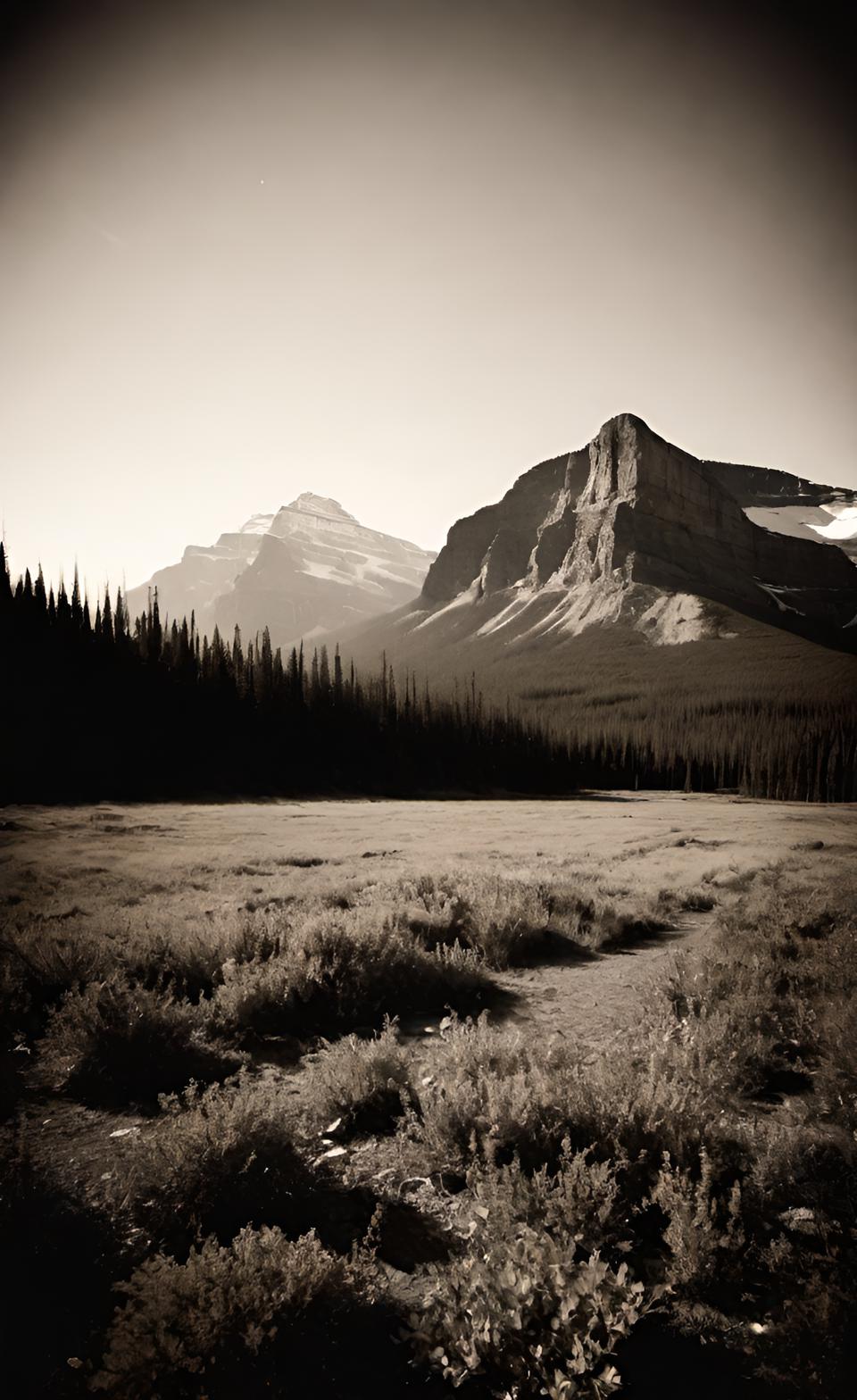- Air Homepage
- Alberta Air Quality
- Air Quality Dispersion Modelling
- Digital Terrain Elevation Data
We use digital terrain elevation data to help us predict emission dispersion.
Digital terrain elevation data is an important ingredient for good air quality dispersion modelling. It needs to be converted into the right format for modelling software in places like Canada.
Accurate air modeling starts with terrain truth - You might miss a dangerous pollution hotspot near a coastline or valley if you use the wrong elevation data. Learn how digital terrain data transforms basic air modelling into precise, regulatory-grade pollution predictions.
This data helps decision-makers create better pollution control strategies by predicting how emissions interact with the landscape. Explore how digital elevation data leads to cleaner air and more precise pollution modeling.
 Predicting air quality with terrain data
Predicting air quality with terrain data- Explore how elevation affects air quality - Learn how the land around you affects it.
- Get to know complex wind patterns - Learn how land and sea breezes affect pollution dispersion.
- See why terrain data is essential for pollution modelling and environmental planning.
- Learn why some models don't handle shoreline pollution well, like AERMOD.
- Prevent Dangerous Emission Levels - Know how terrain affects pollutant concentration near coastlines.
- Learn how terrain-driven wind patterns make pollution worse near water bodies.
- Find out how using the right terrain data can improve pollution predictions.
- Explore Cutting-Edge Pollution Modelling - Learn why CALPUFF is the go-to tool for coastal emissions, and how digital terrain elevation data makes it more accurate.
- Discover key terrain data formats - How can you access the right digital terrain elevation data?
- Discover how terrain and wind interact to create surprising pollution hotspots.
See relevant comments from Canadian air quality modelling guideline documents here.
See here how it's a game-changer when it comes to modelling air dispersion. By predicting how emissions interact with the landscape, this data helps decision-makers craft better strategies and give decision-makers guidance to create cleaner air. Discover how terrain data can help predict pollution patterns and plan and look after the environment.
Digital terrain elevation data - Special uses in British Columbia
Because of differences in surface roughness and heating between land and water, winds and turbulence can become complicated near large bodies of water. Sea breezes (onshore breezes) can develop during the day, while land breezes (offshore breezes) develop at night. Dispersion of emissions is greatly affected by these localized wind patterns.
 Coastal Winds Alter Pollution Spread and including Digital Elevation Data Improves Predictions made when using Models
Coastal Winds Alter Pollution Spread and including Digital Elevation Data Improves Predictions made when using ModelsThere's a possibility that coastal fumigation happens when a tall stack releases a plume towards the land, intersecting with a stable or neutral air regime and a thermal internal boundary layer. In this boundary layer, there's a lot of low-level mixing, which can lead to high ground-level concentrations.
It's best to use CALPUFF in Hybrid mode for modelling coastal effects. To do this, we blend NWP model output with observations in CALMET to account for 3D sea and land breezes. We need overwater meteorological data, including air-sea temperature differences, humidity, air temperature, and mixing height.
A sub-grid scale treatment can also be applied if the thermal boundary layer effects are smaller than the CALMET grid spacing. In TRC (2011b), you can find detailed instructions on how to treat coastline effects.
It's crucial to have digital terrain elevation data when using dispersion models, but not all data covers Canada or works with recommended models. It requires USGS DEM or NED GeoTIFF formats, which Canadian data must be converted to. USGS DEM and other BC-relevant formats are supported by TERREL for CALPUFF.
Canadian Digital Elevation Data (CDED) and BC-specific data from GeoBC are recommended for BC applications. The CDED data at 1:250,000 scale is directly readable, but the higher-resolution elevation data at 1:50,000 has to be converted. DEM files in UTM and BC Albers projection are available from GeoBC.
Check your terrain data for anomalies and make sure the resolution is good enough to capture important features for modeling.
Elevating Dispersion Modelling: The Importance of Digital Terrain Data in Alberta
Because terrain affects substance flow, dispersion models need digital elevation data. It's important to model a large enough study area to cover potential impacts. Elevation data is recommended when using regulatory meteorological data. Choose the best digital terrain elevation data for AERMOD and/or CALPUFF from these sources:
 It is important to consider terrain's impact on substance flow in dispersion modelling.
It is important to consider terrain's impact on substance flow in dispersion modelling.- Elevation data from the regulatory meteorological dataset.
- Canadian Digital Elevation Data (CDED), available in USGS DEM format at 1:50,000 and 1:250,000 scales from Natural Resources Canada. You can download it from the specified directory.
- Approximately 20m in the south, the 1:50,000 scale data has a grid resolution of 0.75 to 3 arc-seconds.
- Approximately 90m in the south, the 1:250,000 scale data has a grid resolution of 3 to 12 arc-seconds.
- AltaLIS Ltd. distributes provincial digital base maps, which you can order online.
Make sure the information is up-to-date, and always use the best data available.
A Guide to CALPUFF and AERMOD: Saskatchewan Fumigation and Dispersion Modelling
Saskatchewan and Manitoba have more large lakes than Alberta and BC and there may be industrial facilities near them. AERMOD doesn't handle shoreline fumigation well, where emissions affect areas near water bodies. This can be done with CALPUFF in hybrid mode, blending NWP model output with observations to include 3-D sea breezes.
This treatment needs overwater meteorological data. With a COASTLN.DAT file, you can specify shorelines if effects happen at scales smaller than CALMET grid spacing. Stacks within 1 km of a water body need to have shoreline fumigation considered; ground-level sources like area or volume don't need it.
 Modelling fumigation of coastal areas is more effective with CALPUFF than AERMOD
Modelling fumigation of coastal areas is more effective with CALPUFF than AERMODModels like AERMOD and CALPUFF rely on detailed three-dimensional elevation data to model the dispersion of pollutants. Terrain data beyond the modeling area is crucial because elevated terrain can affect airflow several kilometers away.
UTM coordinates are needed for AERMOD and CALPUFF when processing digital terrain elevation data. Saskatchewan is divided into three UTM zones, with zone 13 covering most of the region. Saskatchewan prefers the North American datum of 1983 (NAD83).
Based on the modelled area, consider the terrain type. For flat terrain, AERSCREEN can be used, but AERMOD and CALPUFF need terrain information too. You can assign elevations to receptors and generate hill heights with AERMAP or TERREL.
Natural Resources Canada's Canadian Digital Elevation Data (CDED) is available in USGS DEM compatible formats at scales of 1:50,000 and 1:250,000. Grid spacing varies by scale, providing detailed elevation points for Saskatchewan. Organizing the CDED files into grids and sub-files ensures comprehensive coverage of the terrain across the province.
The Role of Topography and Terrain in Emission Dispersion in Manitoba
If you're assessing topography around a pollution source, compare elevation to stack height to see if it's simple or complex. Among the things to remember are:
- noting any terrain higher than the stack within 50 km,
- describing terrain within a 3 km radius,
- identifying prominent features (like tall buildings or valleys),
- noting the nearest provincial or international boundary and its distance and direction, and
- identifying notable water bodies within 20 km.
We at Calvin Consulting Group Ltd...
...understand air quality dispersion modelling can be challenging, but we make it easy for you. Our team of seasoned meteorologists and dispersion modellers can help you secure an operational permit or address potential emergencies.
We have over 85 years of (combined) experience, making us one of the most accomplished companies in Canada. We stretch beyond the basics to provide you the most relevant air quality dispersion modelling.
Our team usually processes five years of site-specific meteorological data along with digital terrain elevation data and land-use data, and prepares the right input files for AERMOD and CALPUFF, whichever best suits your needs.
In addition, we find industrial emission sources in the area and ensure your project meets the highest air quality standards. We offer our own expertise with finding optimal results and create comprehensive, easy-to-understand assessments for regulators and other outsiders to grasp when you need them to do so. Plus, we're familiar with the factors that affect air quality in different parts of Canada.
You want the best when it comes to proving compliance and protecting the environment. That's why we're here. Get in touch with us at...

...to discuss how we can help you.
Clean air is our Passion...Regulatory Compliance is our Business.
Why is terrain data import in air quality modelling?
Terrain data helps modellers understand how pollution disperses near large bodies of water and this includes the effects of land and sea breezes. Winds change the spread of emissions, especially in stable air layers near a shore. CALPUFF handles these complex scenarios and the terrain info is essential here. AERMOD struggles with shoreline fumigation, where pollution from tall stacks mixes near the ground, potentially creating high pollution levels. Having digital terrain elevation data is important because it affects airflow over hills, valleys, and flat terrain. Even terrain features far from the pollution source can affect airflow and pollution distribution, so accurate models need to cover a lot of ground.
Do you have concerns about air pollution in your area??
Perhaps modelling air pollution will provide the answers to your question.
That is what I do on a full-time basis. Find out if it is necessary for your project.
Have your Say...
on the StuffintheAir facebook page
Other topics listed in these guides:
The Stuff-in-the-Air Site Map
And,
Thank you to my research and writing assistants, ChatGPT and WordTune, as well as Wombo and others for the images.
OpenAI's large-scale language generation model (and others provided by Google and Meta), helped generate this text. As soon as draft language is generated, the author reviews, edits, and revises it to their own liking and is responsible for the content.


New! Comments
Do you like what you see here? Please let us know in the box below.